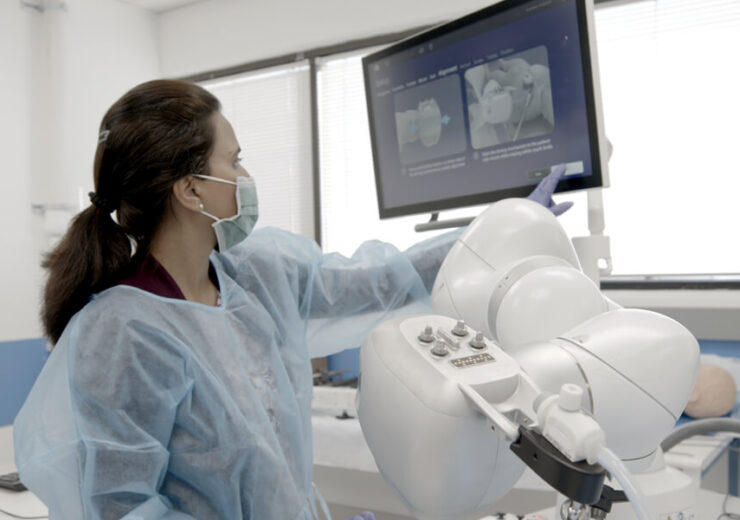Noah’s platform is said to be the only robotic navigated bronchoscopy system on the market to integrate real-time tomosynthesis and utilise a disposable bronchoscope, ushering in a new era in lung nodule biopsy

Noah’s Galaxy System approved in US. (Credit: Noah Medical)
US-based medical robotics manufacturer Noah Medical has received the Food and Drug Administration (FDA) approval for its Galaxy System.
The Galaxy System and its accessories are intended to enable bronchoscopic visualisation of and access to patient airways for diagnostic and therapeutic procedures.
The robotic bronchoscopy system features the company’s TiLT+ technology with integrated tomosynthesis and augmented fluoroscopy.
It comes with an always-on-camera, and direct visualisation features enabled for the entire procedure, including at the time of biopsy.
The Galaxy System is specifically created for four-way bronchoscope articulation, which enables the navigation to the most peripheral lesions possible.
Noah Medical said that its Galaxy System is the only robotic navigated bronchoscopy system available with a single-use, disposable bronchoscope, intentionally designed to improve efficiency and workflow plus potentially reduce the risk of cross-contamination.
Noah Medical founder and CEO Jian Zhang said: “While various technologies to diagnose lung cancer have been utilized over time, the diagnostic yield has remained relatively low.
“The Galaxy System is designed to close this gap in the market, giving clinicians a safe and easy-to-use platform to potentially improve diagnostic yield and produce better clinical outcomes.”
According to the company, potential cancerous lesions are predominantly located in the outer third of the lung, which is more difficult for doctors to reach for a biopsy.
The capabilities of currently available technologies are limited to both reaching and precisely targeting the suspect lesions.
Galaxy System features advanced imaging technologies to provide real-time location updates, and is designed to improve tool-in-lesion and diagnostic yield, said the company.
Furthermore, the system has received positive reviews from pulmonologists and thoracic surgeons who used it as part of pre-clinical studies and technology demonstrations.
